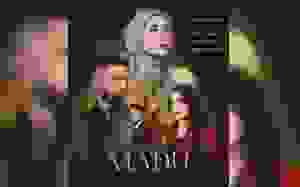7 Wonders Of The Solar System A Definitive Guide

A Definitive Guide to the 7 Wonders of the Solar System
As any astronomer will tell you, we are incredibly lucky. Above our heads, indescribable wonders fill the night skies. Spiraling galaxies. Distant moons buried beneath a layer of ice. Twisting nebulae. The detritus of the Big Bang, spreading out to every corner of our universe.
In our solar system alone, there are worlds and places whose mere names evoke the romantic and the mystical. Who could read about the eerie ice spires of Callisto, the impossibly deep Valles Marineris on Mars, or the apocalyptic Herschel Crater on Mimas without feeling a chill run down their spines?
To celebrate this awe-inspiring diversity, the American magazine Astronomy in 1999 named its ‘7 Wonders of the Solar System’. Here is our definitive guide to these 7 marvels of the night sky - along with three others as mysterious and beguiling as any of the ‘official’ seven.
1. Olympus Mons (Mars)

Image: Kevin Gill
Imagine a mountain that soared so high Everest was a mere blip beside it. A peak so wide that the entire United Kingdom could vanish within its sprawling, impossible mass. A mountain that had its peak permanently outside its planet’s atmosphere, so high no clouds could ever reach it. Welcome to Olympus Mons on Mars, the largest peak known to man.
A long-dead shield volcano, Mons sits on the Martian equator, surrounded by other volcanoes hundreds of times larger than anything on Earth. The cones abruptly rise from a flat, desolate plain, suddenly looming 16 miles into the sky, dominating everything around them. Their size is almost beyond comprehension. Olympus Mons alone could swallow the US State of Arizona whole. Its weight is so vast that it has caused the Martian crust to subside, leaving a strange ‘moat’ around Mons a staggering 2 km deep.
2. The Great Red Spot (Jupiter)

Image: Marc Van Norden
For the past 150 years, a terrifying storm has raged over the surface of Jupiter. Its winds swirl in gusts peaking at over 400 mph. Its center is an inferno, so baking hot it affects the entire atmosphere of the planet. Known as the Great Red Spot, this storm to end all storms could swallow the entire Earth and Mars in a single sitting…and still have room for our Moon. There is nothing else in the solar system quite like it.
The true nature of the spot is a mystery even the brightest minds at NASA have been unable to solve. We don’t know what exactly it is composed of, why it radiates so much heat, or why it is red. We don’t even know how long this super-storm has been raging for. We know for a fact that this remarkable wonder of the solar system has been swirling for over a century-and-a-half, but there’s evidence from early telescope readings that it could have been there since at least 1600. That would mean the entire modern history of Earth - the industrial revolution, the colonization of the Americas, the birth of the machine age and the electronic age - could fit inside its lifespan.
3. The Asteroid Belt (Space)

Image: NASA Goddard
If you were to leap in a spaceship, and blast off towards the limits of the solar system, you’d stumble across something not commonly taught in schools. Between Mars and Jupiter lies a vast asteroid belt, cutting the rocky inner planets off from their enormous gas-giant neighbours. Stretching over millions of kilometers, this fragmented world of rock and ice and gently turning dwarf planets represents the remains of what the solar system could have been.
At the dawn of the solar system, planets were formed by matter bunching together in ever bigger lumps over billions of years. There was easily enough floating around to form several more worlds beyond Mars. However, Jupiter put paid to that. Its gravity stopped any more planets from forming beyond the red planet, by accelerating collisions of matter until they were too violent to clump together. The rocks instead broke down into a belt, with only Ceres remaining big enough to classify as a dwarf planet.
Nonetheless, the asteroid belt is far from a dead place. Just recently, water vapour was discovered on Ceres, along with volcanic activity. This, couple with its status as one of the 7 wonders of the solar system, means the ancient asteroids making up the celestial belt should not be written off just yet.
4. The Surface of the Sun (the Sun)

Image: NASA Goddard
Sol is the monster of our solar system. A vast ball of pulsating fire and plasma, a never-ending set of thermonuclear reactions erupting again and again, it dwarfs all else around it. A single plume of plasma ejecting from its surface can spiral up many, many times higher than the diameter of the entire Earth. Even a planet as vast as Jupiter pales in comparison. There is nothing else we’ve closely studied even remotely like it.
Without the sun, there would be no life on Earth. There wouldn’t even be an Earth, let alone a solar system. Everything we know, everything any of us have ever experienced, is due to the existence of this one star. Absolutely everything about it qualifies as one of the 7 wonders of the solar system, but perhaps it is the surface that is the most-impressive of all. At 5,500 degrees Celsius, it is hot enough to not just melt diamonds, but make them boil, too. It’s also the last stop for light photons hoping to make their way out into the solar system. After hundreds of thousands of years making their way out of the Sun’s core to its surface, they finally fling themselves out at dizzying speed. Eight minutes later, their journey (maybe) ends on Earth, making all life as we know it possible.
5. Enceladus (Moon of Saturn)

Image: Kevin Gill
In the far-future, one of tourism’s must-see sights may well be the geysers of Enceladus. An icy moon orbiting Saturn, Enceladus is considered one of the prime candidates for finding life in our solar system (the others are Jupiter’s moon Europa, Mars, and one of Saturn’s other moons Titan). Even without this, though, the ice world has a huge aesthetic draw. Its tallest geysers shoot up more than twenty times the height of Everest.
First observed in 2005 by the Cassini spacecraft, Enceladus’s geysers are as numerous as they are awe-inspiring. Over 100 cluster around the poles of the moon, blasting out jets of dust and water that can be seen from space. Yet, there are signs that this wonder of the solar system may not be around much longer. Already, the power, height and amount of water the plumes spray has wildly decreased from their 2005 peak. Just as the Colossus of Rhodes (one of the classic 7 wonders of the ancient world) lasted only 50 years before collapsing, so it may be that this wonder will be gone long before tourism is even an option.
6. The Oceans (Earth)

Image: Alvesgaspar
Of all the planets in our solar system, Earth is the only one known to have liquid oceans on its surface. That fact alone is enough to qualify the Earth as one of the 7 wonders of the solar system.
Nowhere else this size supports as much water as our planet. There’s evidence that Mars once had a proto-ocean of its own, Europa may have seas below its thick ice shell, and Saturn’s moon Titan has liquid lakes of methane (more on these below), but where surface H2O is concerned, our world is wonderfully unique.
Perhaps it’s no surprise, then, that planet Earth is also the only one known to support life. The seas are where our common ancestors came from, and still represent the most bio-diverse locations known to science. They’ve shaped our civilizations, bringing wealth and catastrophe in equal measure. It would be an understatement to say humanity’s past, present, and future are intimately entwined with our oceans…along with the fates of all other living things.
7. The Rings of Saturn (Saturn)

Image: NASA Goddard
Mysterious. Ethereal. Beautiful. Haunting. The Rings of Saturn are one of the solar system’s greatest treasures. A thin disc of water ice radiating out in layers from Saturn’s equator, they’ve graced the covers of more Sci-Fi novels and speculative images than perhaps anything else in existence. The mere sight of them is enough to send chills down the spine of even the most-cynical. To see them in real life, from an orbiting spacecraft or the surface of one of Saturn’s moons, would be to experience nature at her most sublime.
Despite its reputation, Saturn is not the only body in the solar system to have rings. Jupiter, Uranus and Neptune all have their own ring systems, as does the large asteroid Chariklo. But none are as extensive or as storied as Saturn’s. In 1655, Christiaan Huygens recorded a ‘dark disc’ surrounding the planet, the first person in history to get close to the true nature of the rings (Galileo saw them first, but mistook them for ‘ears’). Ever since, this wonder of the solar system has captured the imagination of writers and artists, from pulp comic illustrators to literary titans.
Unofficial: Pele Volcano (Io, Moon of Jupiter)

Image: NASA
The smallest of the four Galilean Moons orbiting Jupiter, Io lacks the water of Europa, the magnetic field of Ganymede, or the eerie ice spires of Callisto. Yet this rocky world is far from just a dead lump mindlessly turning in the depths of space. With over 400 active volcanoes, Io is the most geologically-active place in the entire solar system.
Central to this claim is the monstrous super-volcano Pele. Many times the size of Earth’s Yellowstone super-volcano, Pele may be the most-powerful anywhere in the solar system. With a crater that stretches over 12 whole miles, it is capable of pumping insane levels of debris into the sky. Plumes of up to 310 miles high have been known to erupt from it, and the entire volcano is surrounded by a 620 mile wide red ring that has formed permanently around its base. There is simply nothing on Earth that can compare to an eruption from Pele. Beside this wonder of the solar system, Krakatoa would be a dwarf; Mt St Helens a mere pinprick.
Unofficial: Verona Rupes (Miranda, Moon of Uranus)

Image: NASA
At the very edge of our solar system lies one of the most spectacular sights known to man. Squint at the above photo of Uranus’s moon Miranda, and you may just see it: a sheer escarpment rising from the undulating, rocky plains of this scarred and broken satellite. That is Verona Rupes, the tallest, sheerest cliff in the entire solar system. Rising over six miles vertically, it represents the longest drop ever found anywhere.
For comparison, the tallest cliff on Earth is Mount Thor in Canada. Its sheer sides rise 4,100 ft from the empty wilderness without a break. If you jumped off, it would take you 20 seconds to impact against the ground. Verona Rupes is more than eight times taller. Its sides are nearly perfectly flat, featuring almost no outcrops or indentations. Standing on its edge would be like facing out into an infinite void.
Because of its location, high-quality images of Verona Rupes are hard to come by. Uranus has only been visited by NASA once, when Voyager 2 flew by in 1986. Thankfully, that may soon change. NASA has penciled in a return visit in the early 2030s that will specifically look at the planet’s extensive moon system.
Unofficial: Methane Lakes of Titan (Titan, Moon of Saturn)

Image: NASA
The shores of Titan’s great lakes are a mystical place of near-unparalleled beauty and extreme hostility. As rivers of liquid methane pour into the depths, clouds of deadly hydrogen cyanide roll across the horizons, skirting the tops of the great hydrocarbon dunes. Mountains rear up above great, liquid lakes that sit at a steady -180C, the three largest of which are big enough to qualify as seas. Welcome to the place that is simultaneously the most Earth-like and most alien in our planetary neighborhood.
Outside of Earth, Titan’s methane lakes are the only extensive forms of surface liquid for billions of miles. Yet they represent an alternative world of oceans almost painfully hostile to life. Were alien organisms to exist here, they would have to be so unlike anything on Earth as to be almost beyond comparison. The seas themselves are so still that they are almost surreal. Waves don’t exist on this planet, and the glassy surface of the methane perfectly reflects the spinning rings of Saturn above. Without doubt, this may be the most enthralling and haunting place that humans have ever discovered.
Related: A Definitive Guide to the Seven Wonders of Russia
Top image: Assembly of solar system bodies, their relative sizes and distances. Credit: NASA/Wikimedia Commons.
[Source: Urban Ghosts Media. Edited. Top image and some links added.]
Artikel ini hanyalah simpanan cache dari url asal penulis yang berkebarangkalian sudah terlalu lama atau sudah dibuang :
https://realfactsrat.blogspot.com/2020/03/7-wonders-of-solar-system-definitive.html
 PING BABAB : Raksasa Aggregator Malaysia
PING BABAB : Raksasa Aggregator Malaysia

 Image: Kevin Gill
Image: Kevin Gill  Image: Marc Van Norden
Image: Marc Van Norden  Image: NASA Goddard
Image: NASA Goddard  Image: NASA Goddard
Image: NASA Goddard  Image: Kevin Gill
Image: Kevin Gill  Image: Alvesgaspar
Image: Alvesgaspar  Image: NASA Goddard
Image: NASA Goddard  Image: NASA
Image: NASA  Image: NASA
Image: NASA  Image: NASA
Image: NASA 


























